 Feature
Feature
 Photography by Jason Matthew
Photography by Jason MatthewJohn Milner: “I’m not surprised, drivin’ a Field Car.”
Falfa: “Field Car? What’s a Field Car?’
Milner: “A Field Car runs through the fields, drops cow shit all over the place to make the lettuce grow.”
hat classic smack talk took place between two of the baddest car owners in the coming-of-age comedy drama American Graffiti. But most of us car folks knew that just by the names associated with the quotes.
Those lines can help when you need a smile on your face or if you need a little inspiration when it comes to building a hot rod. It was Bob Falfa’s ’55 Chevy along with the souped-up Primer Gray ’55 from the 1971 movie Two-Lane Blacktop (both car-guy cinema classics) that inspired John Blane to build a ’55 Chevy in a style that reflects both of those cars. “This car has been a childhood dream after watching American Graffiti and Two-Lane Blacktop,” John confesses. “Those two cars were totally badass and influenced me to build this car the way it is.”
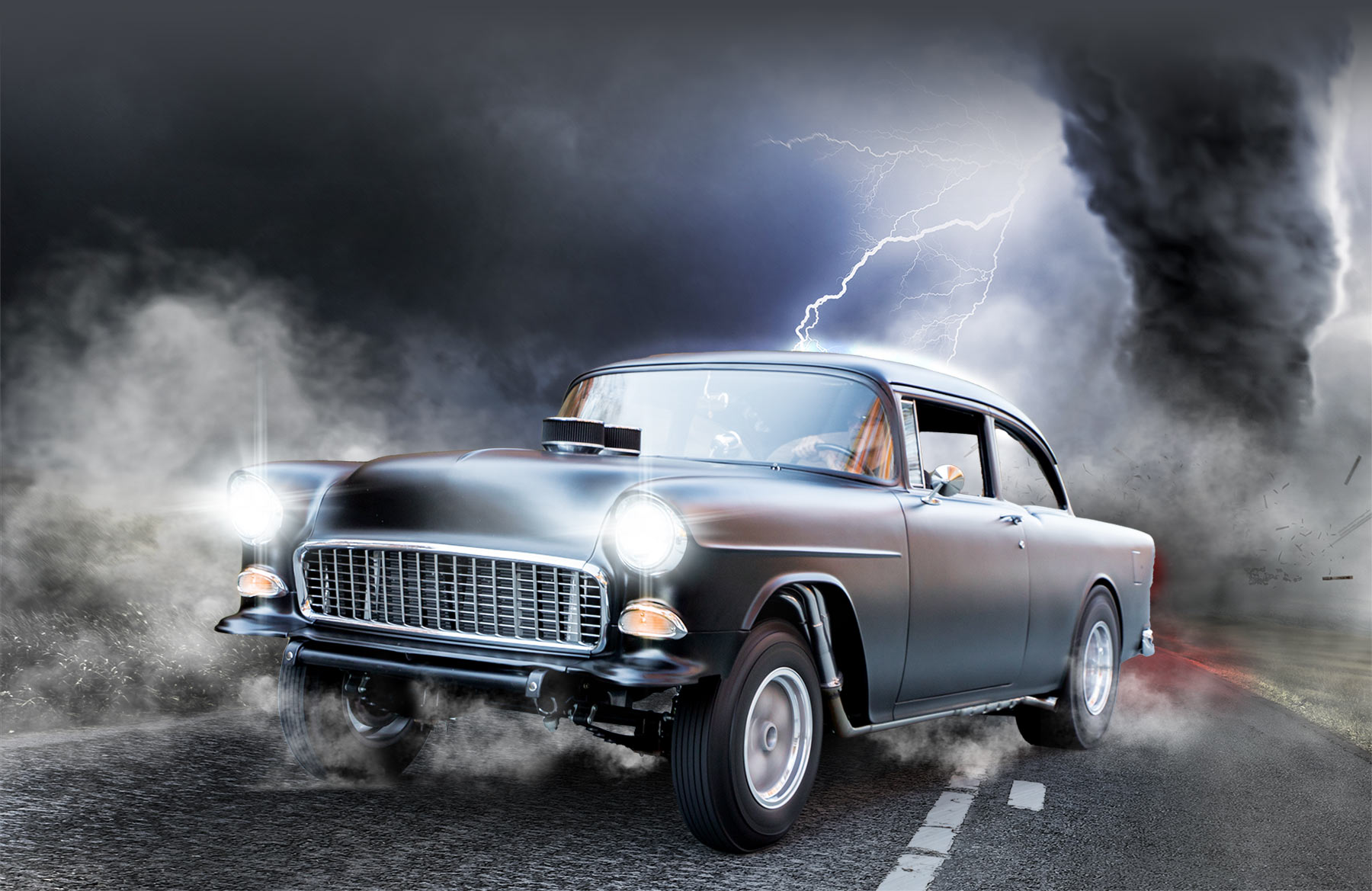
What wasn’t perfect is that the car was about 3,000 miles away. “Buying a car sight unseen is something I’d never do,” John confirms. “I was bummed until my girlfriend, Patty, reminded me she had a friend, Jim, who lived near the car, so she came up with the idea to have him Facetime me so I could see more of the car beyond the photos the owner had posted online.”
Passing the Facetime test, the car was soon loaded on a hauler and was on its way from Washington to New Jersey. “That was the longest two weeks ever!” John exclaims.
Once the ’55 arrived, John got busy getting to know the car, making some changes, and basically personalizing the car to make it his own. “I refer to it as an old-school, aggressive, purpose-built car,” John reveals.
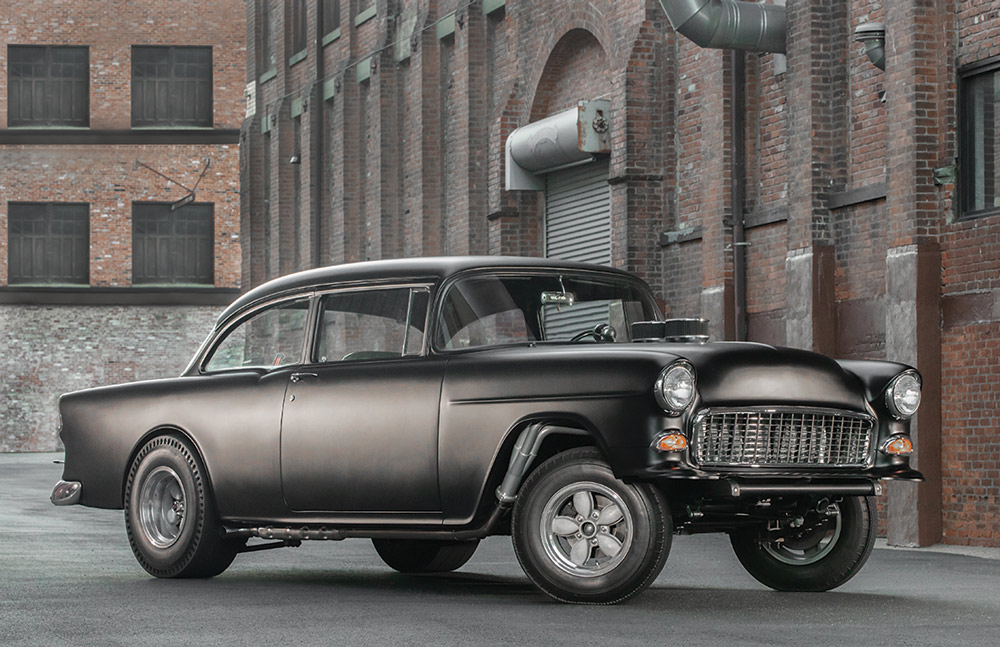
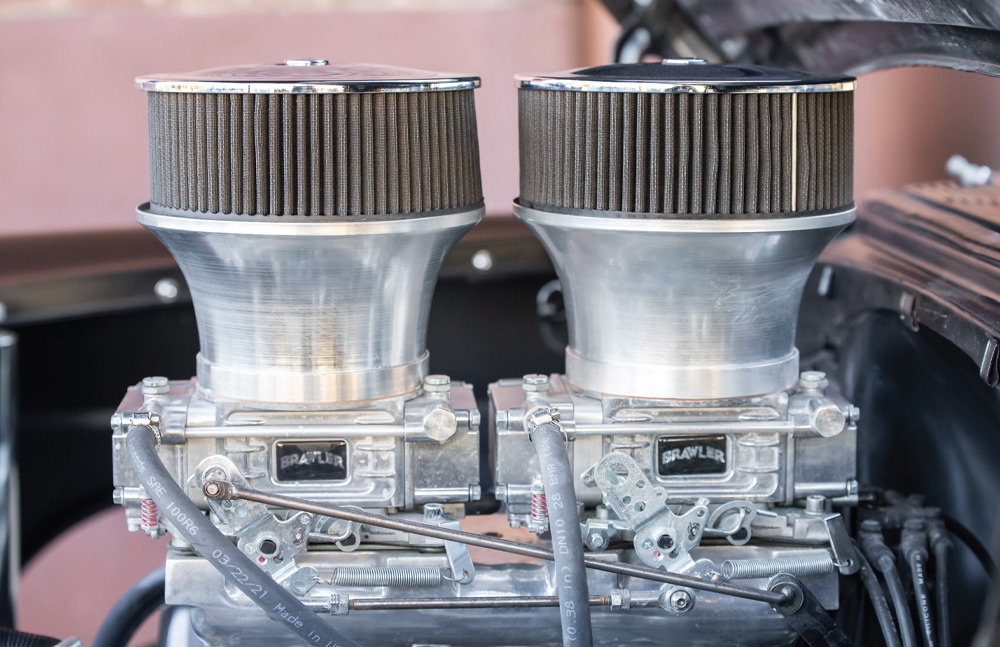


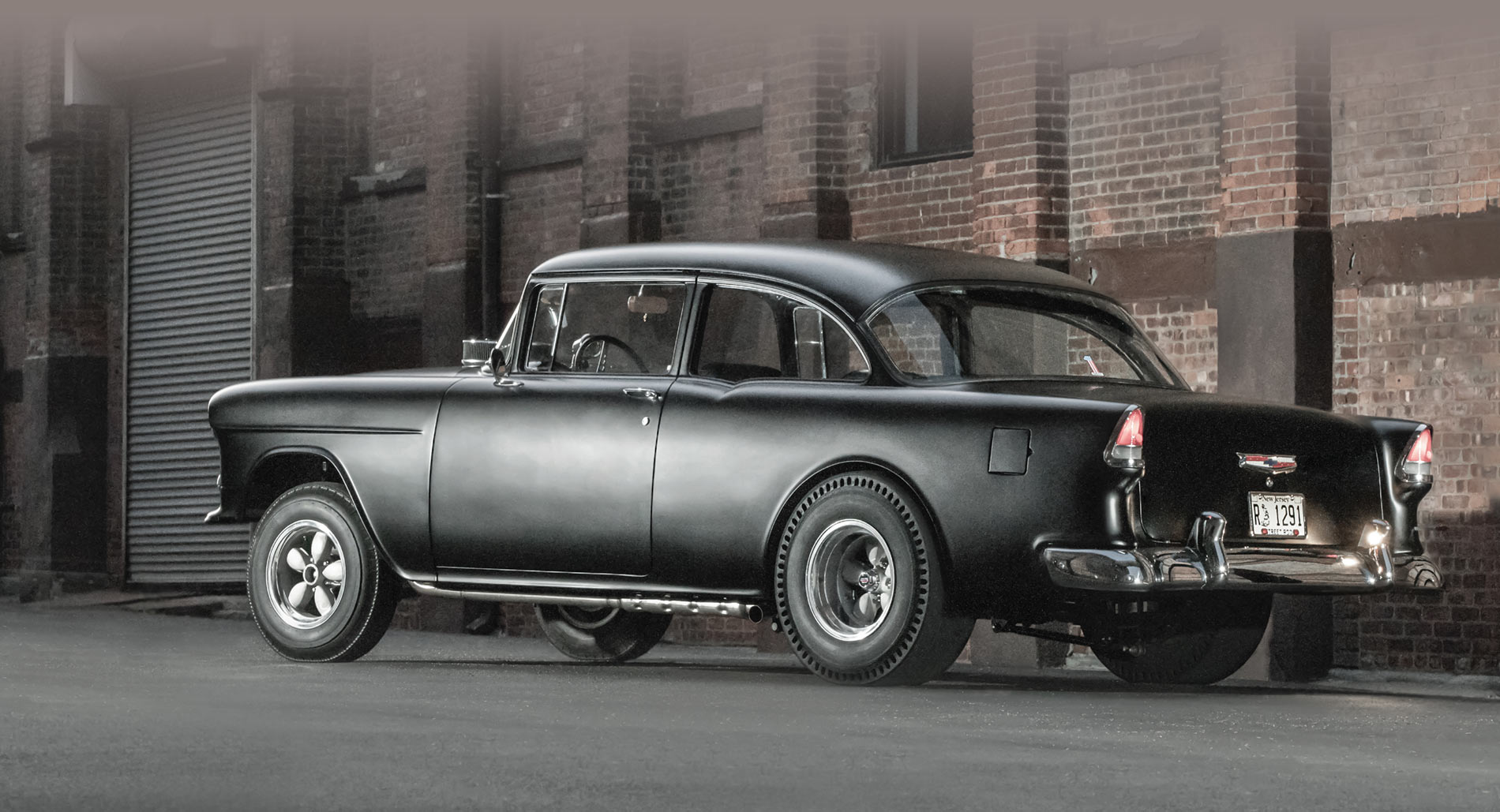
Two-piston, 11-inch disc brakes up front and stock drums out back get the job done, while also fertilizing the time-period style of the build. A stock pedal assembly works the Classic Performance Products (CPP) dual master cylinder for confident braking power.
To continue with the ’60s gasser vibe, a set of 15-inch American Racing 200s, commonly known as Daisy wheels, reside on all four corners, while American Classic rubber rolls up front and Towel City Pie Crust Cheater Slicks grab asphalt out back–all doing their part in keeping this Tri-Five in the proper bygone decade.
Continuing with the period-correct motif, John retained the 400ci small-block that came with the car. It features a GM steel crank, I-beam rods, and flat-top pistons. Although the compression ratio is not available, John informed us of a Comp Cams solid lifter cam and Camel-Hump 202 heads. The classic mill is dressed in finned valve covers, while a pair of velocity stacks roost on top of two Holley Brawler carbs and a tunnel ram intake–the perfect gear for this particular Tri-Five. A set of stainless Patriot fenderwell headers look the part and mate up to a 2.5-inch stainless exhaust tubes with a set of Stainless Works chambered exhaust doing their best to contain the commotion created by the rowdy small-block. The combination creates a rebellious sound that coincides with gasser attitude. John has yet to get the car on the dyno but estimates somewhere about 450 hp and 480 lb-ft of torque, which he claims makes this car a “monster to drive.”
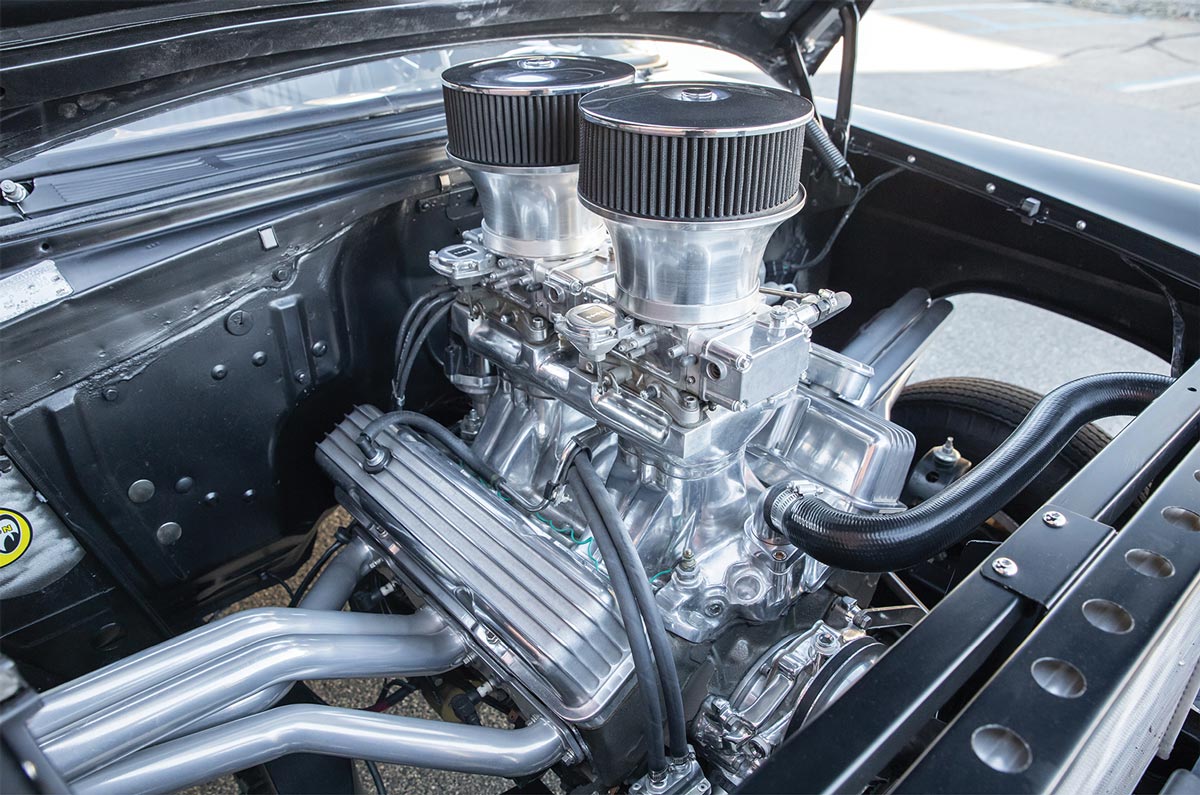
The interior reveals a minimalist approach designed more for business and less for comfort. The stock gauges and dash bring on the ’50s aura while the underdash gauge pod and a Sun Super Tach propped on the dash reassures us of the ’60s build style. The simplicity continues in the cockpit with a Moon steering wheel on the factory column and Procar by Scat buckets sheathed in black vinyl. The Del Ray pattern on the door panels reminds us that this ’55 escaped a catastrophic ’80s redo, which could have sent this time capsule in a completely different era. Yes, the interior features cupholders but are a sound investment due to the rising cost of Starbucks beverages, besides John would rather not stain the fresh Classic Industries black loop carpet.
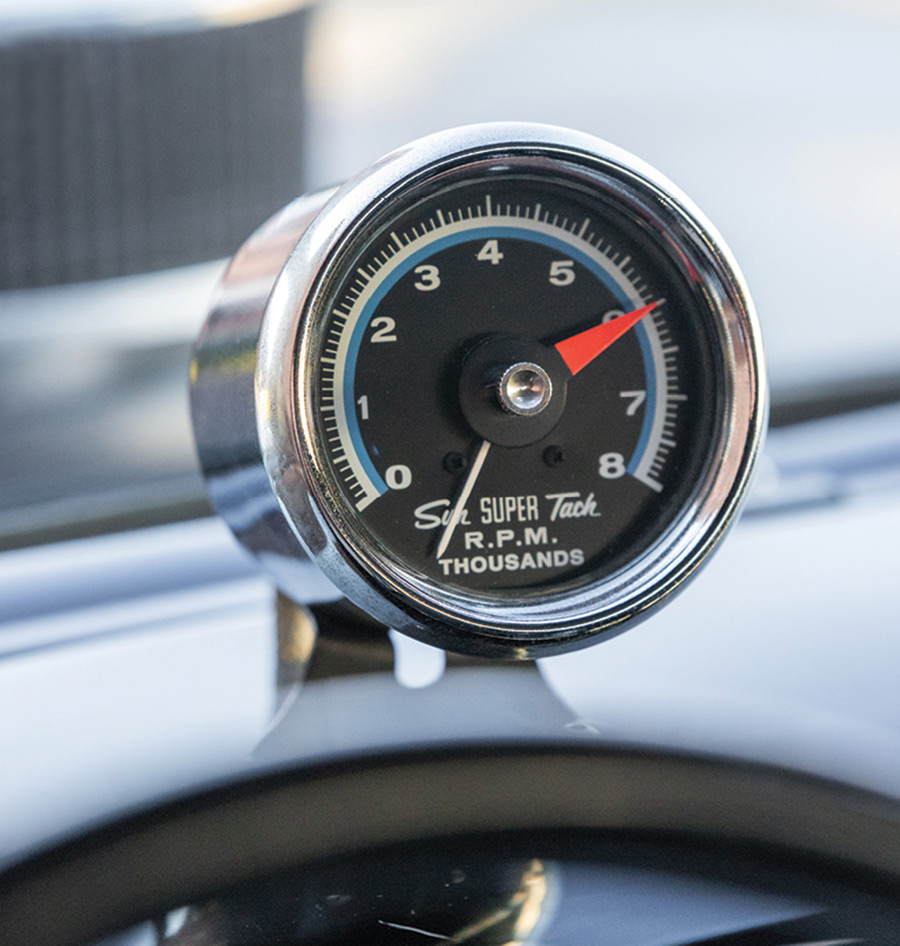
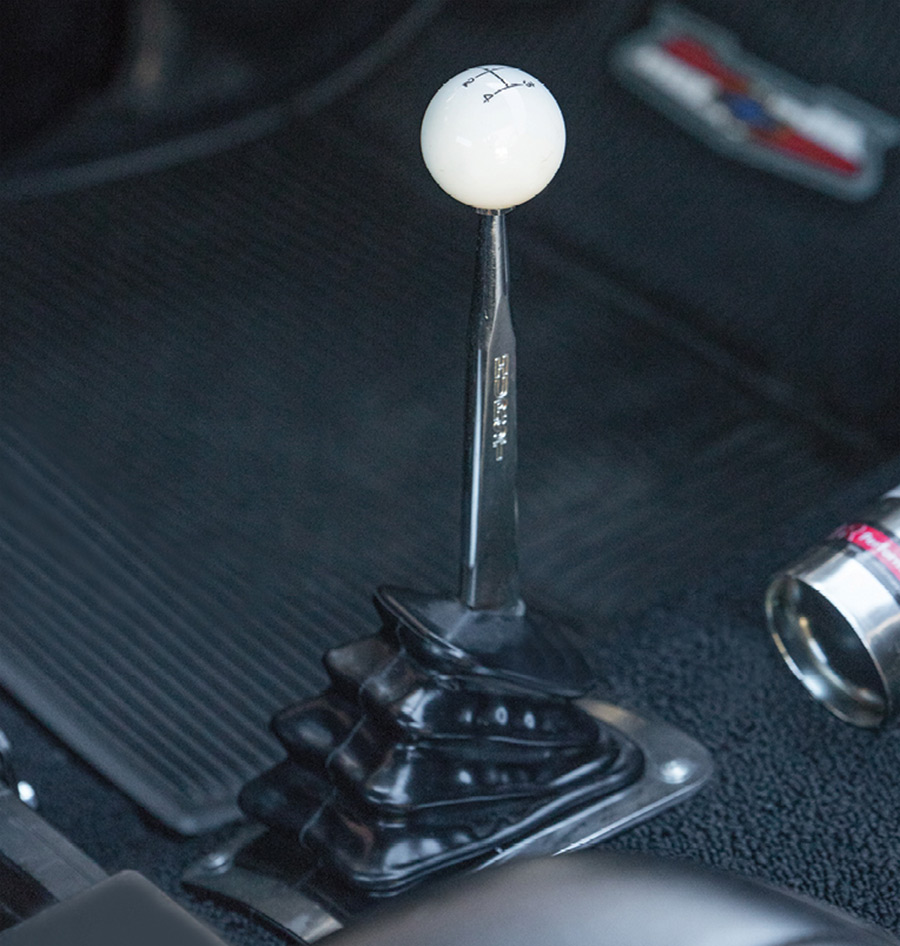


It’s been said that true hot rodders’ cars are never really done, but even in its current state, John’s ’55 is an absolute badass and does a great job of causing a ruckus on the streets of Butler, New Jersey–about as far as you can get from a field car in Modesto, California.
Take that, Milner!
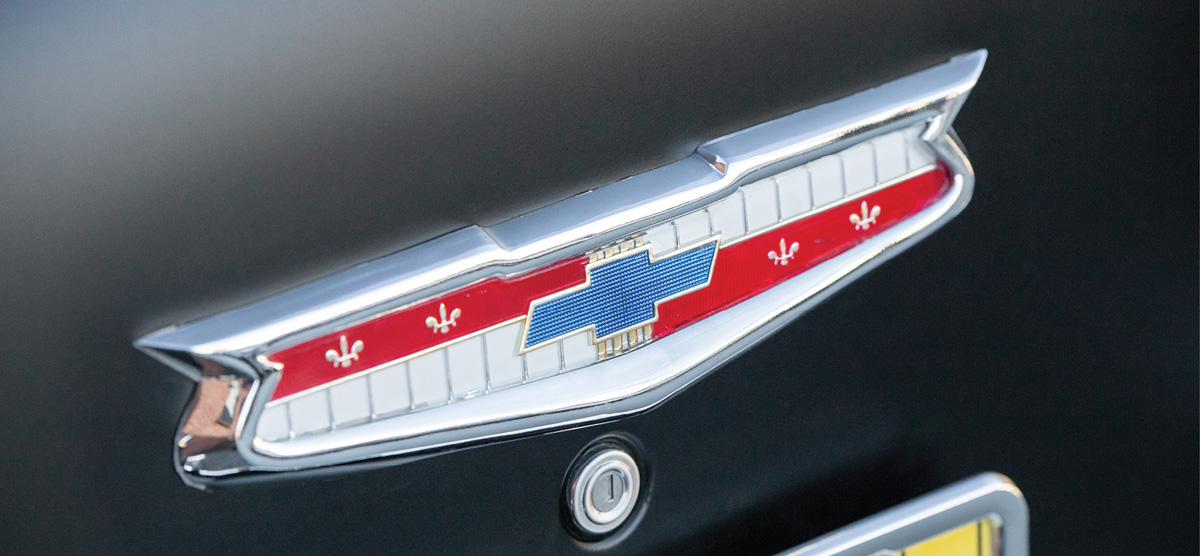

Vehicle: ’55 Chevy 210
Type: Chevrolet small-block
Displacement: 400 ci
Cylinder Heads: Camel-Hump 202
Rotating Assembly: GM steel crank, I-beam rods, flat-top pistons
Camshaft: Comp Cams solid lifter
Induction: Tunnel Ram, two 600-cfm Holley Brawler carburetors, K&N velocity stack air cleaners
Exhaust: Patriot fenderwell headers, Pypes 2½-inch stainless exhaust, Stainless Works chambered exhaust
Ignition: Mallory
Ancillaries: Howe Racing crossflow aluminum radiator, Mooneyes finned valve covers, chrome 100-amp one-wire alternator
Output: 450 hp and 480 lb-ft
Transmission: Muncie M21
Clutch: Centerforce
Rear Axle: Total Performance 9-inch rearend, Eaton Posi limited-slip locker differential 4.11 gears, Dutchman 33-spline axles
Chassis: Factory
Front Suspension: Speedway Motors Straight Axle Gasser Kit, leaf springs, Afco shocks, Vega steering box
Rear Suspension: Stock leaf springs, 2-inch lowering blocks, Afco shocks, CalTracs traction bars
Brakes: Front 11-inch disc, two-piston calipers, rear factory drum
Master Cylinder: CPP dual
Wheels: American Racing 200 S (Daisy), 15×7 front, 15×10 rear
Tires: Coker American Classic, 6.70-R15 front, Towel City Pie Crust Cheater Slicks, 29×10-R15 rear
Upholstery: Black loop carpet, Del Ray–style vinyl door panels
Installation: Owner
Seats: Procar by Scat buckets front, stock bench rear
Steering: Stock column, Moon 15-inch steering wheel
Shifter: Hurst
Instrumentation: Dash-mounted Sun Super Tach, Stewart-Warner temp, oil pressure, and volts underdash
HVAC: Windwing open/closed
Sound System: Nope
Bodywork: By owner and Kevin Bannon
Painter: Cris at Clemente’s Auto Body (Denville, NJ)
Paint: SEM Products Hot Rod Matte Black
Front Bumper: Delete
